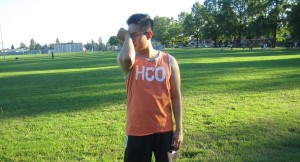Retinal vascular occlusion involves the eye, specifically the retina. This part of the eye is a light-sensitive tissue layer lining the rear of the eye and vital for vision.
The retina requires a continuous supply of blood to ensure that the cells are provided with sufficient oxygen and nutrients. Nevertheless, it is possible for one of the vessels transporting blood to or from the retina to end up clogged or develop a blood clot which is called as an occlusion.
The occlusion can cause blood or other fluids to accumulate and prevent the retina from filtering light properly. Once light is blocked or fluid is present, abrupt vision loss occurs. The seriousness of vision loss might be based on the site of the blockage.
What are the causes?

The precise cause of blockage or blood clots in the retina is unknown. It can arise once the eye veins are constricted. Nevertheless, other factors that can affect the flow of blood puts one at higher risk for a retinal vascular occlusion such as:
- Atherosclerosis
- Blockage or narrowing in the carotid arteries of the neck
- Blood clots that often travel from another site in the body to the eye
- Heart conditions such as valve issues or erratic rhythm
- High blood pressure
- Diabetes
- High cholesterol
- Intravenous drug use
- Being overweight
- Over the age of 60 years
- Rare blood conditions
- Glaucoma where the optic nerve is damaged
- Smoking
- Macular edema or buildup of fluid, swelling and thickening of the central region of the retina
- Inflammatory disorders such as giant cell arteritis
What are the characteristics?
The main sign of retinal vascular occlusion is an abrupt change in vision. This might include blurred vision or partial or full vision loss.
The visual signs typically affect only one eye. The changes in vision might be brief or permanent depending on how early treatment is started and if there are other health conditions presents.
Management of retinal vascular occlusion
There is no drug available for a retinal vascular occlusion. Most cases end up with lasting changes to their vision.
When managing the condition, the doctor might suggest medications such as blood thinners or injections into the eye.
Other drugs given as part of treatment include:
- Antivascular endothelial growth factor (anti-VEGF) drugs which are injected into the eye
- Corticosteroid drugs are injected into the eye to control the swelling
Laser therapy might be used in some cases to break any blockage in the blood vessels and prevent further damage.

